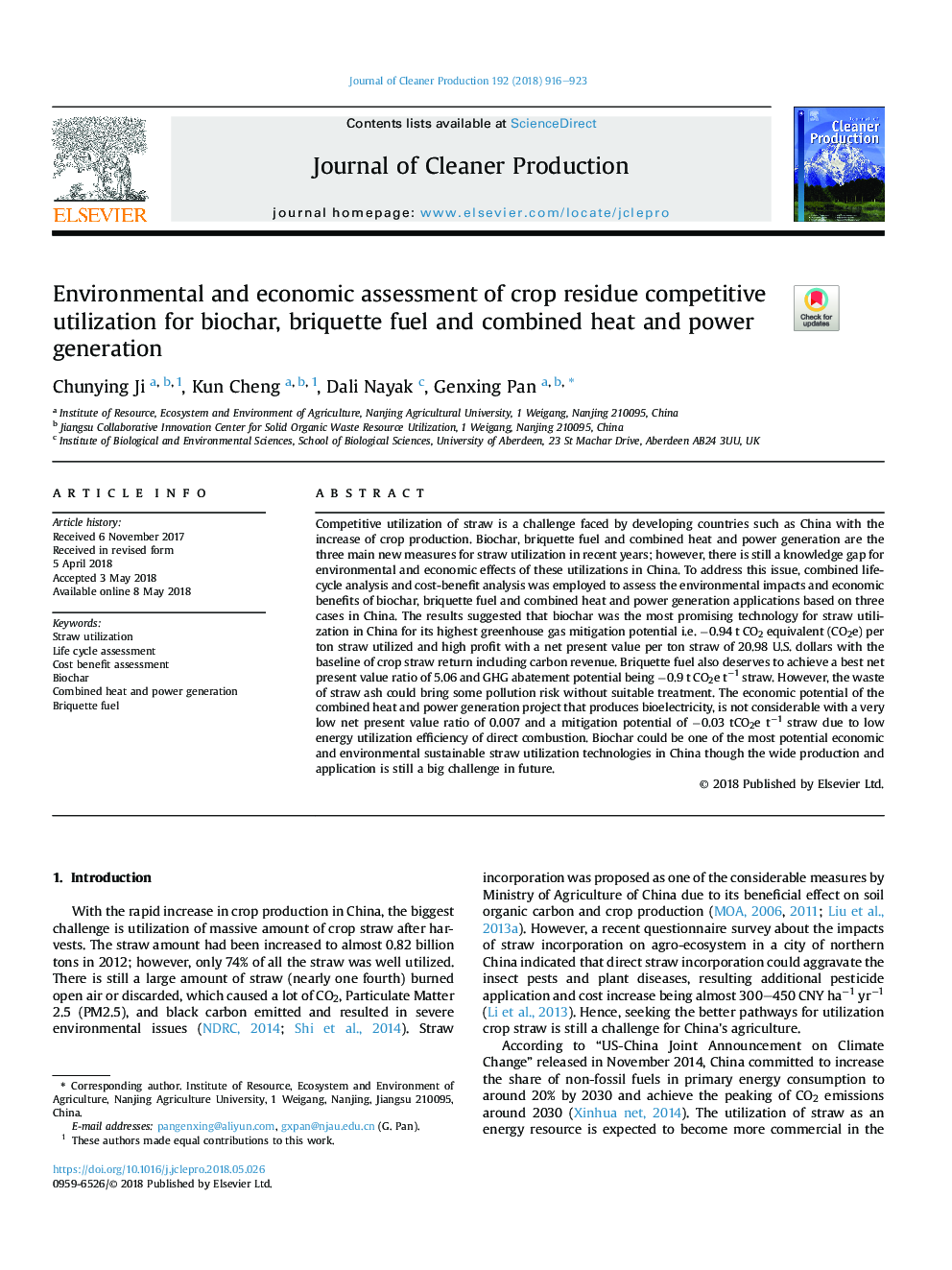| Article ID | Journal | Published Year | Pages | File Type |
|---|---|---|---|---|
| 8094726 | Journal of Cleaner Production | 2018 | 8 Pages |
Abstract
Competitive utilization of straw is a challenge faced by developing countries such as China with the increase of crop production. Biochar, briquette fuel and combined heat and power generation are the three main new measures for straw utilization in recent years; however, there is still a knowledge gap for environmental and economic effects of these utilizations in China. To address this issue, combined life-cycle analysis and cost-benefit analysis was employed to assess the environmental impacts and economic benefits of biochar, briquette fuel and combined heat and power generation applications based on three cases in China. The results suggested that biochar was the most promising technology for straw utilization in China for its highest greenhouse gas mitigation potential i.e. â0.94â¯t CO2 equivalent (CO2e) per ton straw utilized and high profit with a net present value per ton straw of 20.98 U.S. dollars with the baseline of crop straw return including carbon revenue. Briquette fuel also deserves to achieve a best net present value ratio of 5.06 and GHG abatement potential being â0.9â¯t CO2e tâ1 straw. However, the waste of straw ash could bring some pollution risk without suitable treatment. The economic potential of the combined heat and power generation project that produces bioelectricity, is not considerable with a very low net present value ratio of 0.007 and a mitigation potential of â0.03 tCO2e tâ1 straw due to low energy utilization efficiency of direct combustion. Biochar could be one of the most potential economic and environmental sustainable straw utilization technologies in China though the wide production and application is still a big challenge in future.
Related Topics
Physical Sciences and Engineering
Energy
Renewable Energy, Sustainability and the Environment
Authors
Chunying Ji, Kun Cheng, Dali Nayak, Genxing Pan,
